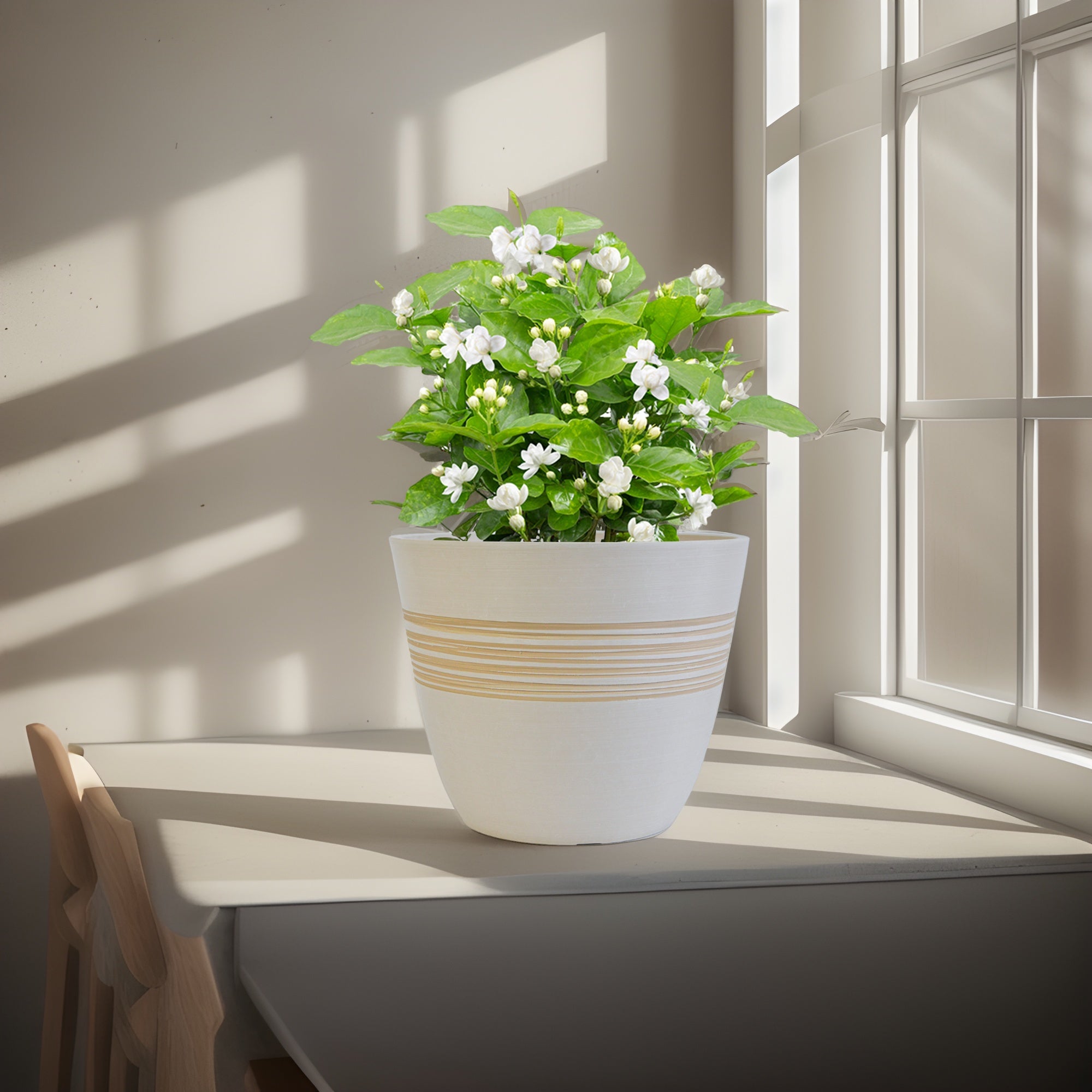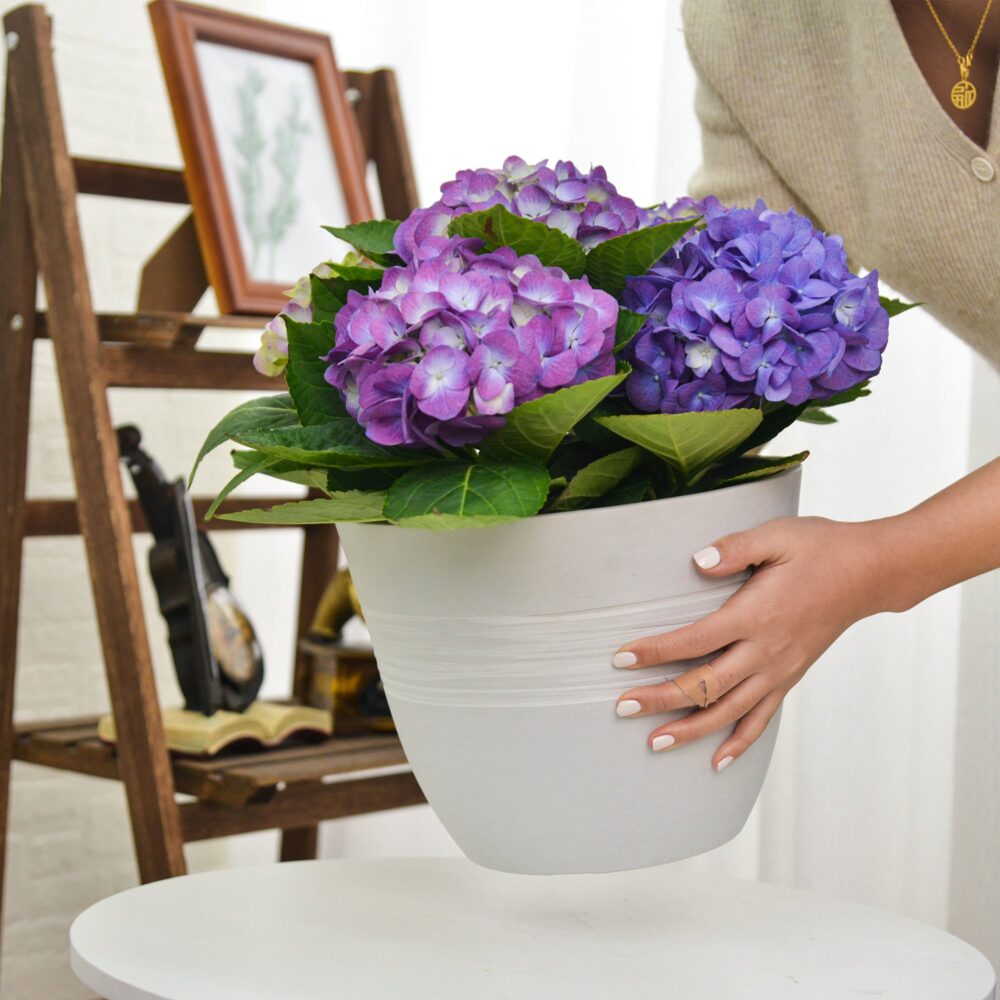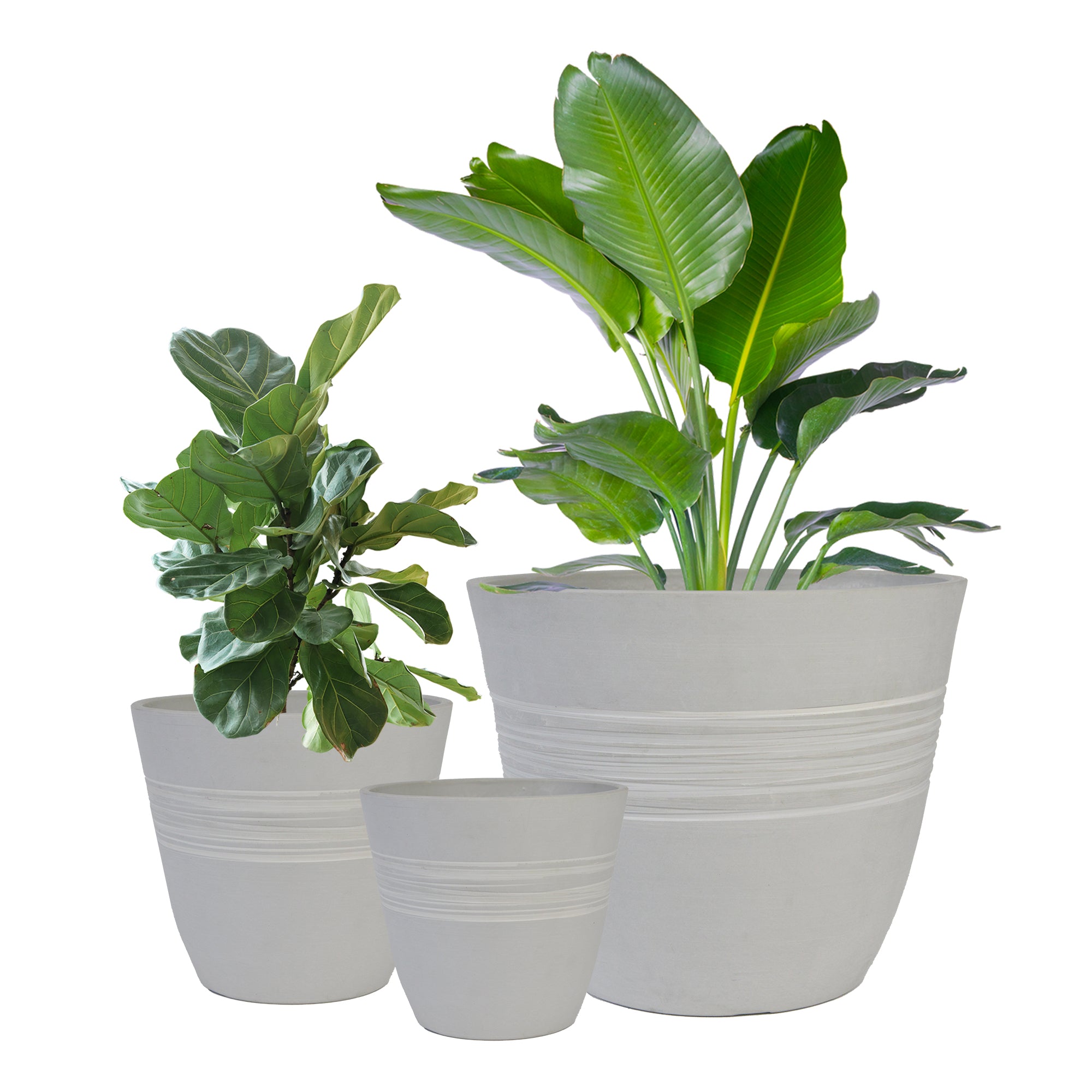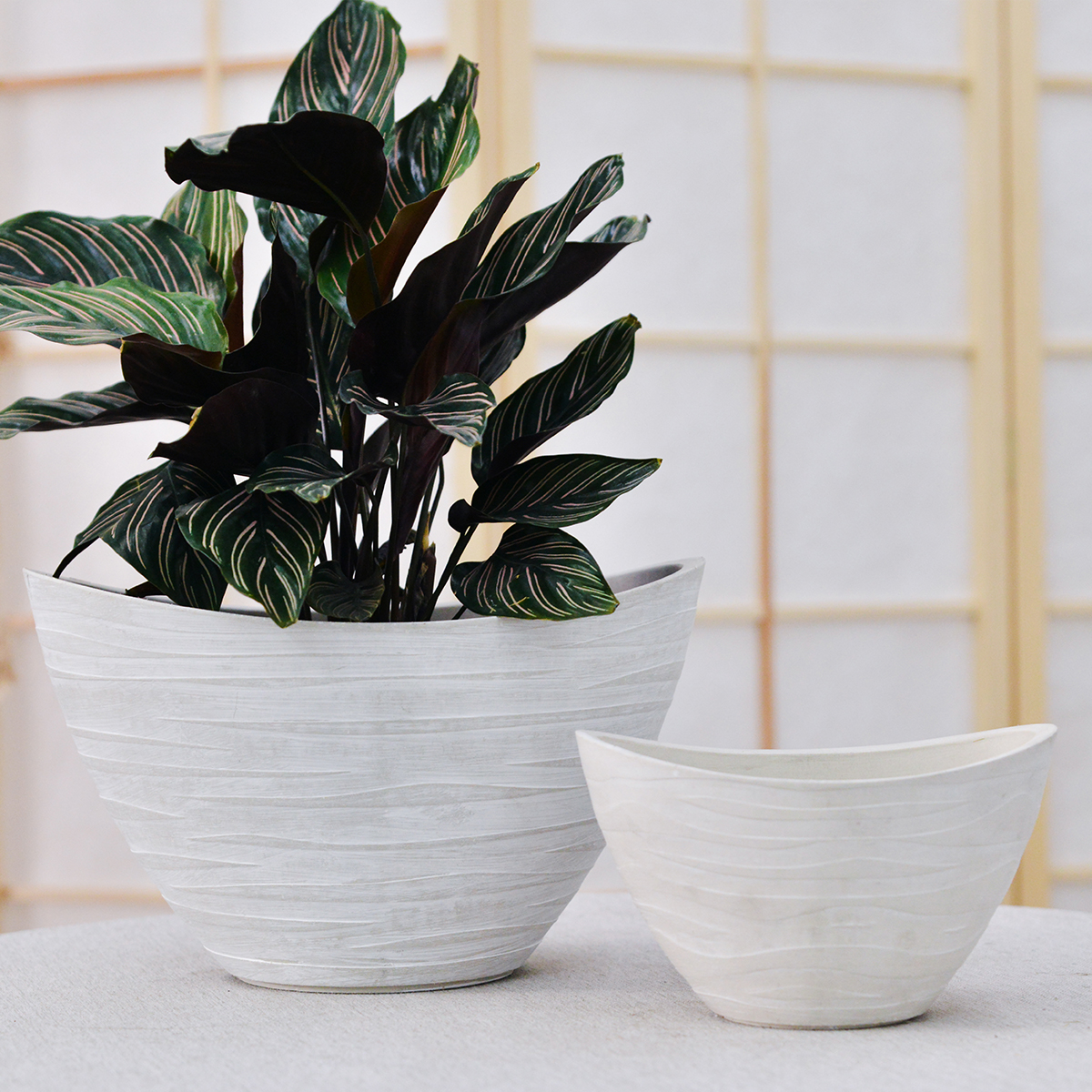Lavender Indoors: The Complete Guide to Growing Lavandula at Home
Yearning for the soothing scent of lavender and the beauty of its purple blooms to grace your home? Lavender, scientifically known as Lavandula, is a beloved fragrant shrub prized for its aromatic foliage and iconic purple flowers, renowned for their calming properties and versatility. While traditionally grown in sunny gardens, Lavender is also a rewarding and relatively easy-to-grow indoor plant, bringing a touch of Provence and aromatherapy benefits to your interior spaces. This comprehensive guide will provide you with everything you need to know to grow Lavandulaindoors, from selecting the right variety and pot to mastering essential care techniques for a thriving and fragrant Lavender plant in your home.
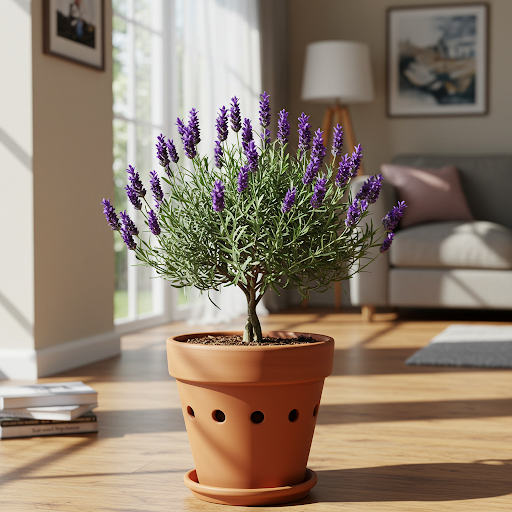
Lavender
What is Lavender (Lavandula)?
Lavandula, commonly known as Lavender, is a genus of 47 known species of flowering plants in the mint family, Lamiaceae, native to the Mediterranean region, extending south to tropical Africa and east to India. Lavender is celebrated for its highly fragrant, slender, silvery-green to gray-green leaves and its iconic flower spikes composed of many small, usually purple, but also blue, pink, or white flowers, depending on the variety. Lavender is a perennial shrub with an upright to bushy growth habit. Indoors, Lavender is primarily grown for its aromatic and ornamental value, bringing its calming fragrance and beautiful blooms into the home. Lavender is prized for its relaxing scent, beautiful flowers, culinary and aromatherapy uses, and relative ease of indoor cultivation, making it a cherished and practical houseplant.
Can Lavender (Lavandula) Thrive Indoors?
Yes, Lavender (Lavandula) can thrive indoors and is a delightful addition to a home herb garden or as a fragrant houseplant. While it is native to sunny, dry Mediterranean climates, Lavender is adaptable to indoor environments, provided it receives sufficient light and good drainage. Growing Lavender indoors allows you to enjoy its soothing fragrance and beautiful blooms year-round, and have a readily available supply of fresh lavender for culinary, aromatherapy, or crafting purposes, regardless of your outdoor climate.
Ideal Indoor Growing Conditions for Lavender (Lavandula):
- Varieties of Lavender (Lavandula) for Indoors: While many lavender varieties can be grown indoors, some are better suited to container growing and indoor environments due to their size and growth habits. Popular indoor Lavender varieties include:
- *Lavandula angustifolia ‘Hidcote’: A popular English Lavender, relatively compact (2 feet tall), known for its deep purple flowers and strong fragrance.
- *Lavandula angustifolia ‘Munstead’: Another popular English Lavender, slightly larger than ‘Hidcote’ (up to 3 feet), but still manageable indoors, known for early blooming and good fragrance.
- *Lavandula angustifolia ‘Phenomenal’: A more heat and humidity tolerant English Lavender hybrid, relatively compact, good for warmer indoor environments.
- *Lavandula stoechas (Spanish Lavender): Known for its distinctive “pinecone” shaped flower heads topped with bracts, often more tolerant of humidity than English Lavender, consider compact varieties like ‘Otto Quast’ or ‘Otto Pink’.
- *Lavandula x intermedia ‘Grosso’ (Lavandin): A hybrid lavender known for its very strong fragrance and larger size, can be grown indoors but may need more space and pruning.
- *Lavandula dentata (French Lavender): Known for its fern-like, toothed leaves and camphoraceous scent, more tolerant of humidity and shade than English Lavender, consider compact varieties.
- Light: Lavender needs very bright light to thrive indoors. It is a sun-loving plant and requires at least 6-8 hours of direct sunlight per day to flower well, maintain its compact growth, and produce its fragrant essential oils. South-facing windows are ideal, providing the most intense sunlight. West-facing windows can also work if they offer several hours of direct afternoon sun. East-facing windows may provide some morning sun, but might not be sufficient on their own, especially in winter. Insufficient light will result in leggy, weak growth, fewer flowers, and reduced fragrance. If natural light is limited, supplement with grow lights (full-spectrum LED grow lights are recommended) to provide adequate light intensity and duration. Place grow lights a few inches above the plant canopy and keep them on for 12-16 hours per day.
- Soil: Lavender needs well-draining soil to prevent root rot. It thrives in slightly sandy, alkaline soil that is not overly rich. Use a well-draining potting mix, such as a cactus and succulent mix, or a general-purpose potting mix amended with perlite, vermiculite, and coarse sand or gravel to improve drainage and aeration. Avoid heavy, moisture-retentive potting mixes and amend with lime if your potting mix is acidic to achieve a slightly alkaline pH (pH 6.5-8.0 is ideal). Excellent drainage is paramount for indoor lavender.
- Watering: Lavender is drought-tolerant once established, and prefers slightly drier conditions rather than consistently moist soil. Water thoroughly when the top inch or two of soil is completely dry. Allow the soil to dry out significantly between waterings. Water deeply until water drains out of the drainage holes. Overwatering is the most common problem with indoor lavender and can quickly lead to root rot. Underwatering is preferable to overwatering. In fall and winter, reduce watering frequency significantly as growth slows down. Watering frequency will vary greatly depending on light levels, temperature, humidity, pot size, and season. Check soil moisture regularly by feeling the soil deeply. When in doubt, err on the side of underwatering. Use room temperature water.
- Temperature: Lavender prefers moderate temperatures during the growing season, ideally between 65°F to 75°F (18°C to 24°C). It can tolerate warmer temperatures, but extreme heat should be avoided. In winter, it benefits from a slightly cooler dormant period with temperatures between 40°F to 50°F (4°C to 10°C), which can help improve its vigor and flowering in the following season. However, it can also tolerate average room temperatures year-round if necessary. Avoid exposing it to freezing temperatures indoors. Good air circulation is beneficial.
- Humidity: Lavender prefers low humidity. It is native to dry Mediterranean climates and is well-adapted to drier air. High humidity can be detrimental and increase the risk of fungal diseases, especially if combined with poor air circulation. Average household humidity is generally sufficient. Avoid misting lavender, and ensure good air circulation around the plant.
Planting Your Lavender (Lavandula) Indoors:
- Starting from Seed, Cuttings, or Potted Plants: Lavender can be started from seed, but germination can be slow and somewhat unreliable, and seedling plants may not be true to type for named cultivars. Propagation from cuttings is more common and easier for named varieties. The easiest way to start growing Lavender indoors is to purchase established potted plants from nurseries, garden centers, or online retailers.
- Propagation from Cuttings: Stem cuttings (3-4 inches long) can be easily rooted in water or moist potting mix. Take cuttings from new growth in spring or early summer. Remove lower leaves and place cuttings in water or directly into moist rooting medium.
- Planting Time: Lavender can be planted or repotted at any time of year indoors, but spring or early summer, at the start of the growing season, is generally recommended for optimal establishment and growth.
Choosing the Right Pots for Indoor Lavender (Lavandula):
- Suitable Pot Types: Select pots with excellent drainage. Terracotta pots are highly recommended for lavender as they are porous and allow the soil to breathe and dry out more quickly, which lavender prefers. Ceramic or plastic pots can also be used, but ensure they have ample drainage holes and be extra cautious not to overwater.
- Drainage: Drainage is absolutely critical for Lavender to prevent root rot. Ensure your chosen pot has large drainage holes at the bottom. You can also add a layer of gravel or pot shards at the base of the pot to further improve drainage.
- Pot Size: Choose a pot that is appropriately sized for the current size of the plant and allows for some growth. Lavender is a moderate grower indoors and will need repotting into larger containers as it matures. Start with a pot that is 1-2 inches larger in diameter than the root ball when repotting. Young lavender plants can start in 4-6 inch pots. Mature indoor Lavender plants may eventually need pots that are 8-12 inches in diameter or larger, depending on the variety and desired size.
- Potting Mix: Use a well-draining, slightly alkaline potting mix as described earlier (cactus/succulent mix, or general-purpose mix amended for drainage and pH).
Essential Care Tips for a Thriving Indoor Lavender Plant (Lavandula):
- Watering Schedule: “Water Sparingly, Allow Soil to Dry Out Completely Between Waterings”. Water only when the top 1-2 inches of soil are completely dry. Allow the soil to dry out significantly between waterings. Err on the side of underwatering rather than overwatering.
- Light Management: Intense Bright Light is Absolutely Essential. Provide at least 6-8 hours of direct sunlight per day. Supplement with grow lights if natural light is insufficient, especially in winter, to encourage flowering and strong fragrance.
- Pruning (Annually for Shape and Flowering): Prune Lavender annually, typically after flowering in late summer or early fall, to maintain a compact, bushy shape and encourage more blooms in the next season. Avoid pruning into old wood, as lavender may not regrow from bare wood. Light deadheading of spent flowers throughout the blooming season can also encourage continued flowering.
- Fertilizing (Lightly, Infrequently): Lavender is not a heavy feeder and does not require frequent fertilization. Fertilize sparingly, only once or twice a year in spring with a balanced liquid fertilizer (10-10-10 or similar) diluted to half strength, or a fertilizer specifically formulated for herbs. Follow package instructions carefully. Avoid over-fertilizing, which can lead to weak, leggy growth, reduced flowering, and less fragrant foliage.
- Air Circulation is Important: Ensure good air circulation around your indoor lavender plant to help prevent fungal diseases and promote healthy growth. Open windows occasionally (when temperatures are suitable) or use a small fan to improve air movement, especially in humid conditions.
- Repotting Schedule: Repot Lavender every 1-2 years, or when it becomes root-bound or the potting mix is depleted. Repot in spring or early summer. Repotting into fresh, well-draining, slightly alkaline potting mix is beneficial for their long-term health and flowering.
- Winter Dormancy/Cool Period (Beneficial for Flowering): While not strictly required indoors, providing a slightly cooler dormant period in winter with temperatures between 40-50°F (4-10°C) and slightly reduced watering can encourage better flowering in the following spring.
- Pest and Disease Control: Indoor lavender is relatively pest and disease-resistant if grown in proper conditions. Monitor for occasional pests like aphids or spider mites. Root rot is the most common disease issue, caused by overwatering and poor drainage. Ensure excellent drainage and avoid overwatering to prevent root rot and fungal problems. Treat any pest infestations promptly with insecticidal soap or neem oil.
Popular Lavender Cultivars for Indoor Growing (within Lavandula):
- *Lavandula angustifolia ‘Hidcote’ (English Lavender, deep purple, compact)
- *Lavandula angustifolia ‘Munstead’ (English Lavender, early blooming, fragrant)
- *Lavandula angustifolia ‘Phenomenal’ (English Lavender Hybrid, heat/humidity tolerant)
- *Lavandula stoechas ‘Otto Quast’ (Spanish Lavender, compact, distinctive flowers)
- *Lavandula dentata (French Lavender, fern-like foliage, humidity tolerant)
In Summary:
Growing Lavender (Lavandula) indoors is a rewarding way to bring the calming fragrance and beautiful blooms of this classic herb into your home. Its aromatic foliage and relatively low-maintenance nature (when its specific needs are met) make it a practical and cherished houseplant. By providing intense bright light, well-draining, slightly alkaline potting mix in terracotta pots with excellent drainage, watering sparingly and allowing the soil to dry out completely between waterings, ensuring good air circulation, and offering annual pruning, you can successfully cultivate thriving and fragrant Lavender plants indoors and enjoy their beauty and calming aroma year-round.
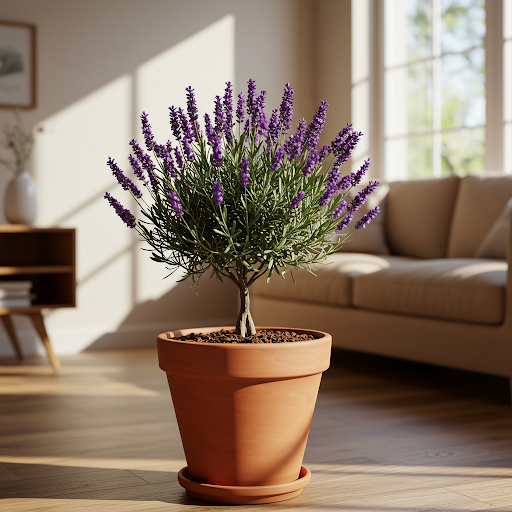
Lavender
Important Note: Lavender (Lavandula) is considered non-toxic to humans and pets, making it a safe choice for households with children and animals. The primary care challenges with indoor lavender are providing sufficient intense light and avoiding overwatering, which can lead to root rot. Providing excellent drainage and allowing the soil to dry out significantly between waterings are key to successful indoor lavender cultivation. With attention to these needs, you can enjoy the beauty and fragrance of home-grown lavender indoors for years to come.
Planter for Indoor Outdoor Plants, Set of 2 Modern Decorative Plant Pots with Drainage Hole, Decorative Flower Pots
By greenship-seo|2025-04-10T07:46:01+00:00January 9, 2025|Categories: Hand-carving Series|Tags: Decorative Flower Pots, Self-Watering Pots|
Planter for Indoor Outdoor Plants, Set of 2 Modern Decorative Plant Pots with Drainage Hole, Decorative Flower Pots
By greenship-seo|2025-01-14T12:26:44+00:00January 14, 2025|Categories: Hand-carving Series|Tags: Decorative Flower Pots|
20T
By greenship|2024-08-13T06:42:22+00:00August 13, 2024|Categories: Hand-carving Series|
Plant Pots 6 inch 8 inch 12 inch for Indoor Outdoor Plants, Set of 3 Modern Decorative Planter with Drainage Hole, Decorative Flower Pots
By greenship-seo|2025-04-10T06:38:40+00:00January 16, 2025|Categories: Hand-carving Series|Tags: Decorative Flower Pots|
20YB
By greenship|2024-08-16T05:37:57+00:00August 16, 2024|Categories: Hand-carving Series|
11TH
By greenship|2024-08-13T02:50:25+00:00August 13, 2024|Categories: Hand-carving Series|

